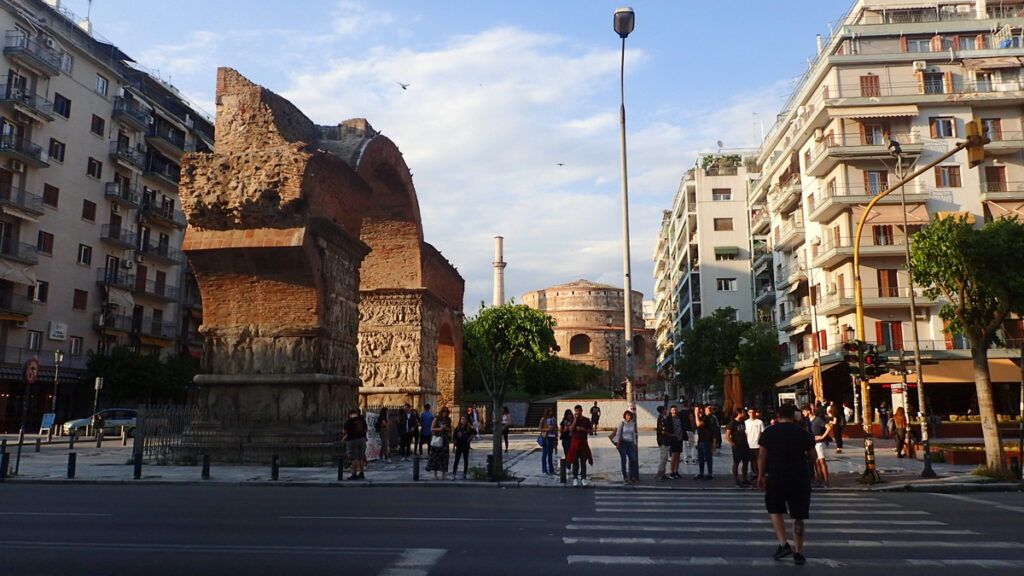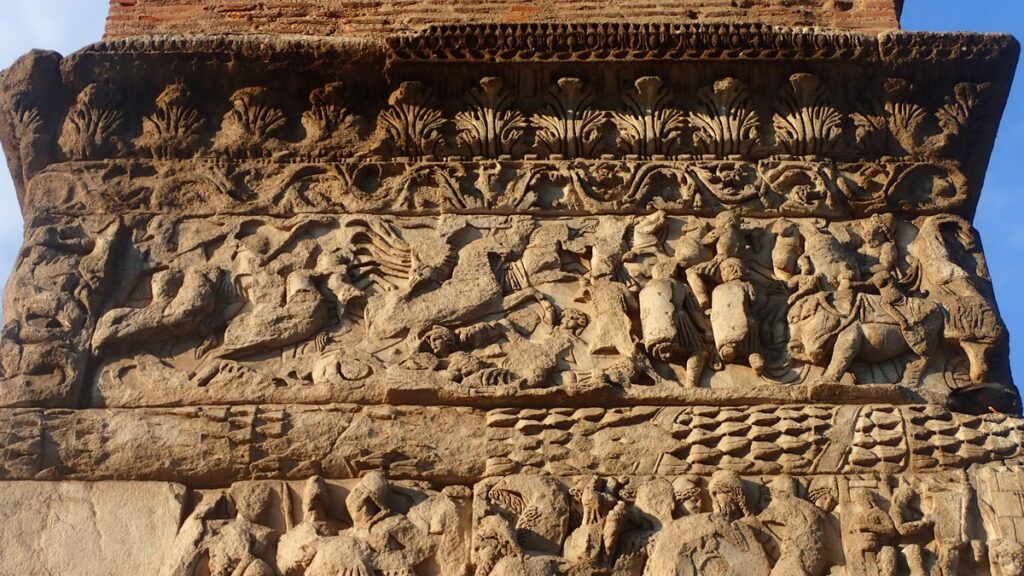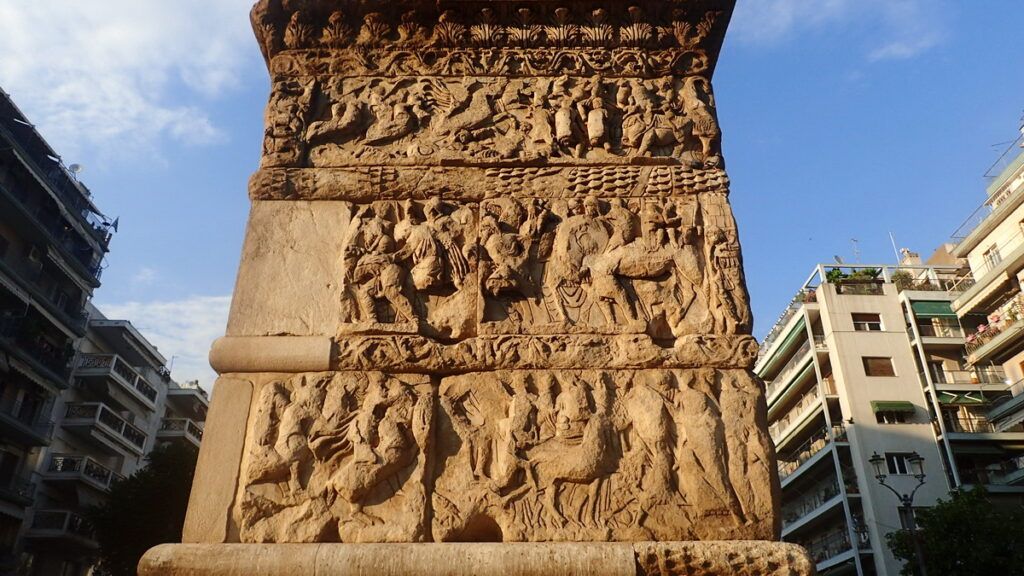In Greek, “kamara” is the word for arch – any arch. But when you hear “Kamara” in Thessaloniki, it almost certainly means only one thing – the Triumphal Arch of Galerius. At what has always been one of the city’s busiest intersections, the Kamara of Thessaloniki is the most recognizable landmark and meeting point in the city. And it has been, for centuries.
The Kamara, together with the Rotunda, gives a vivid picture of the overwhelming grandeur of Roman Thessaloniki. Understanding more about its history makes it a lot more interesting, starting with its location.
Where is the Arch of Galerius – Kamara of Thessaloniki?

The Arch of Galerius is on Egnatia’s busiest intersection. It was also the busiest intersection when the Kamara was built. Egnatia was once the decumanus maximus – the main avenue of Thessaloniki, crossing the city from west to east. The pedestrian zone of Dimitriou Gounari street – today the crowded and festive student quarter – runs through the arch going north to south. This was the Processional Way, leading to the Rotonda. The Kamara was built at this significant intersection
Who was Galerius, of the Kamara?
By the 3rd century AD, the Roman Empire was nearly at the point of collapse, threatened from invasions and political instability. This is often called the Crisis of the Third Century, or the Imperial Crisis. In 293, Emperor Diocletian instituted the Tetrarchy – a system of government dividing the power and responsibility among four leaders. This enabled the Roman Empire to better protect itself from Barbarian invasions and from its rivals, notably the Persians.
Galerius was one of the Caesars of the Tetrarchy, rising later to the rank of Augustus. The capital of his region was Simrium (in present-day Serbia, near Belgrade). But for two significant periods of his reign – 299-303 and 308 -311, he chose Thessaloniki as his seat of power. Many of Thessaloniki’s great Roman monuments – the Kamara of Thessaloniki included – date from the earlier period.
The History and Decoration of the Kamara

The Triumphal Arch of Galerius – or Kamara – celebrates the victory of Galerius in his campaign against the Persians. It was built between 298 and 305. Relied sculpture in bands tells a vivid story, over the 28 zones still preserved.
There are many scenes and figures on the arch. You’ll notice that – for symbolic effect – not everything is in realistic scale. Galerius for instance is sometimes depicted as larger than the soldiers around him. Elephants can appear no larger than horses; a gate may be the same size as a man.
The scenes are dramatic and evocative. Some are historic, while others are symbolic, such as Galerius battling a figure thought to depict the Persian Emperor Narses. There is a scene of Diocletian and Galerius performing a ritual libation and victory sacrifice to the patron gods. Another shows Gareius seated and holding a scepter, with the figure of Nike (Victory) on his right.
Other panels show Galerius addressing his troops, and Galerius receiving the Persian emissaries of peace. Still another shows a procession of Persian bearing gifts and leading panthers to Galerius.
These are among the many scenes you can make out. For a detailed analysis of each panel and its location on the Kamara, please consult here. The curious might enjoy hunting for the specific scenes using these images and descriptions as a guide.
What Did the Kamara Look Like When It Was Built?
Just three of the Kamara’s original 8 pillars remain. But its enough to give us a clear picture of what the monument once was like. You’ll see a large arch and, on its north side (towards the Rotunda) a small arch. There was another small arch on the south side. Next to this there was an identical parallel construction, to make two rows of four pillars each. There was a dome over the central four pillars. The decumanus maximus passed through the central arch. The Processional Way, connecting the arch with the Rotonda, had covered porticos running along either side.
How Do You Get to the Kamara of Thessaloniki?
Honestly, the Kamara very hard to miss – it’s one of the main landmarks and meeting points of town. The arch marks the start of the main section of the downtown, west of where the university is today. Just east of here was once the eastern city wall, with the Casandrian gate by Syntrivani square. There are many remnants of the eastern city wall along Ethnikis Aminis above Egnatia, just east of Kamara.
The Kamara of Thessaloniki Today

This open plaza and triumphant ruins are a favorite place to congregate. Before cell phones, this was the main place for groups of friends to meet before a night out. We imagine it was for centuries- Thessaloniki has always been a sociable city.
Ever a civic center, Kamara is also an assembly area for political protests. In fact, you’ll usually see banners around.
While you’re here, walk up to the Rotonda, only about 100 meters away, imagining the grand processional way as you do.

